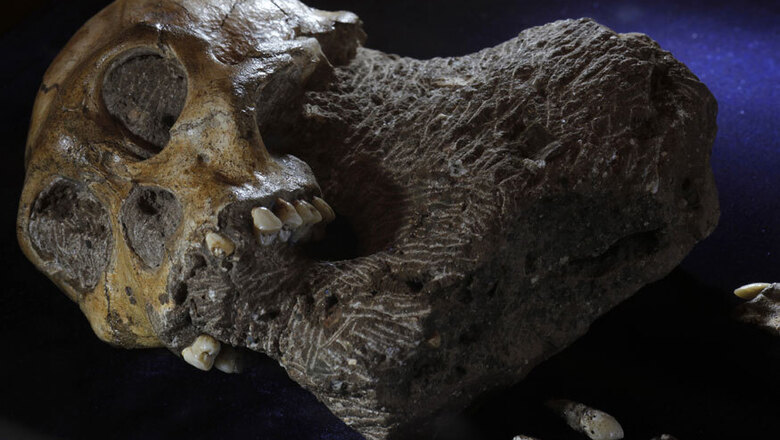
views
London: Scientists have discovered human-like footprints in the Greek island Crete - dating back to 5.7 million years, which suggests that human ancestors may have existed in Europe at the same time as they evolved in Africa.
Ever since the discovery of fossils of Australopithecus in South and East Africa during the middle years of the 20th century, the origin of the human lineage has been thought to lie in Africa.
More recent fossil discoveries in the same region, such as the 3.7 million year old Laetoli footprints from Tanzania which show human-like feet and upright locomotion, have cemented the idea that hominins originated in Africa and remained isolated there for several million years before.
The discovery of the 5.7 million year old human-like footprints by researchers at the Uppsala University in Sweden overthrows this simple picture and suggests a complex reality.
Human feet have a very distinctive shape, different from all other land animals. The combination of a long sole, five short forward-pointing toes without claws, and a hallux ("big toe") that is larger than the other toes, is unique.
The feet of our closest relatives, the great apes, look more like a human hand with a thumb-like hallux that sticks out to the side.
The Laetoli footprints, thought to have been made by Australopithecus, are quite similar to those of modern humans except that the heel is narrower and the sole lacks a proper arch.
By contrast, the 4.4 million year old Ardipithecus ramidus from Ethiopia, the oldest hominin known from reasonably complete fossils, has an ape-like foot.
The researchers who described Ardipithecus argued that it is a direct ancestor of later hominins, implying that a human-like foot had not yet evolved at that time.
The newly found footprints have an unmistakably human- like form. This is especially true of the toes.
The big toe is similar to our own in shape, size and position; it is also associated with a distinct 'ball' on the sole, which is never present in apes.
The sole of the foot is proportionately shorter than in the Laetoli prints, but it has the same general form.
The shape of the Trachilos prints indicates unambiguously that they belong to an early hominin, somewhat more primitive than the Laetoli trackmaker.
They were made on a sandy seashore, or a small river delta, whereas the Laetoli tracks were made in volcanic ash.
"What makes this controversial is the age and location of the prints," said Per Ahlberg at Uppsala University in Sweden.
At approximately 5.7 million years, they are younger than the oldest known fossil hominin, Sahelanthropus from Chad, and contemporary with Orrorin from Kenya, but more than a million years older than Ardipithecus ramidus with its ape-like feet.
This conflicts with the hypothesis that Ardipithecus is a direct ancestor of later hominins. Furthermore, until this year, all fossil hominins older than 1.8 million years came from Africa, leading most researchers to conclude that this was where the group evolved.
"This discovery challenges the established narrative of early human evolution head-on and is likely to generate a lot of debate," said Ahlberg.
"Whether the human origins research community will accept fossil footprints as conclusive evidence of the presence of hominins in the Miocene of Crete remains to be seen," he Ahlberg.


















Comments
0 comment